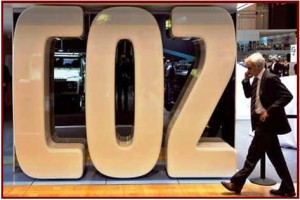
Marketplace pressure over sales and stock prices are increasingly, forcing CEOs to deal with climate change.
The U.S. Environmental Protection Agency or EPA today issued its annual enforcement results, which the Agency said showed significant environmental and public health protections achieved during 2012. EPA said that there was a reduction of 2.2 billion pounds of air, water and land pollution, and 4.4 billion pounds of hazardous waste, as well as $252 million in civil and criminal penalties levied.
The report came after the Republicans were defeated in the 2012 presidential election with several candidates expressing disdain for EPA and their desire to abolish the world’s largest and arguably most effective environmental regulatory body.
“We are using vigorous enforcement, as well as innovations in monitoring and transparency, to reduce pollution violations, protect and empower communities and focus on the environmental problems that matter most,” said Cynthia Giles of EPA.
As characterized by EPA, fiscal year 2012 results include:
- Sustained and focused enforcement attention on serious violators of clean drinking water standards improved compliance. The number of systems with serious violations has declined by more than 60% in the past three years as a result of combined federal and state enforcement work.
- More than 67% of large combined sewer systems are implementing clean water solutions to reduce raw sewage and contaminated storm water.
- Bringing criminal prosecutions where criminal activity threatens public health, such as failing to use required pollution control equipment or knowingly violating pollution rules resulting in death or serious harm or falsifying pollution information. (Read AutoInformed on Pelican Oil Refinery Guilty of Clean Air Act Crimes in Louisiana)
EPA also said it is advancing environmental justice by incorporating fenceline monitoring, which requires companies to monitor their air emissions and make that data available to the public. EPA also secured $44 million in additional investments through settlements for supplemental environmental projects that benefit impacted communities. (Read AutoInformed on BP Fined $8 Million for Clean Air Act Violation in Indiana)
The power of public accountability is also increasingly being used by EPA to help improve environmental compliance. EPA’s 2012 enforcement actions map provides information about violators in communities. EPA’s state dashboards and Clean Water Act pollutant-loading tool has information about local pollution with a look at how government is responding to pollution problems.
Last September, The Carbon Disclosure Project released an analysis showing that S&P 500 companies are making progress towards reducing carbon emissions when compared to the so-called Global 500 that operate in countries with more stringent greenhouse gas regulations. CDP claims the results show a “tipping point” has been reached at top levels of corporate management to integrate a so called “sustainability agenda” into overall business strategy. This apparent acknowledgement of the growing spending and voting power of the green movement is occurring without comprehensive regulatory requirements in the U.S. to reduce CO2.
See also:

